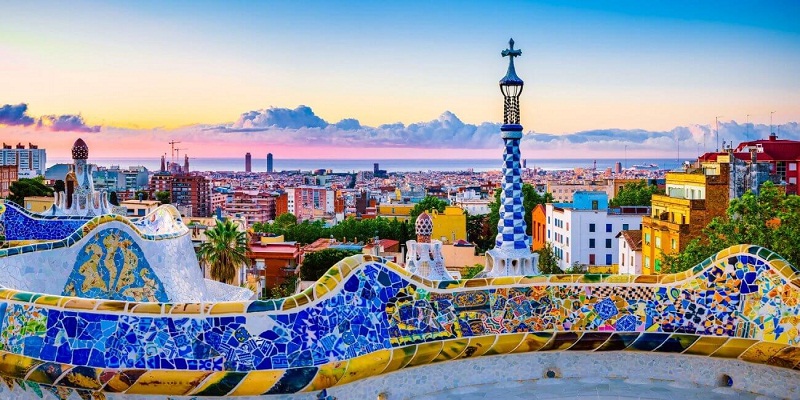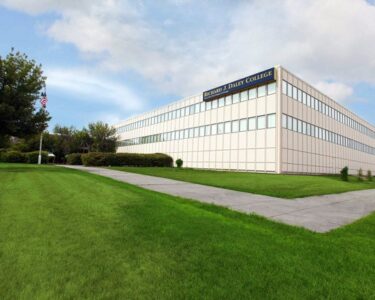The first human traces in Barcelona date from 2500 BC and the existence of the first settlement is between 2000 and 1500 BC. According to the Latin poet Rufo Festo Aviano, to the fourth century BC in the area, there were two Iberian villages, one on the mound Taber, whose name is unknown, which historians have called in different ways such as Barcilo, Barcinom or Barkeno, and that could be the origin of the term Barcelona, and another on Mount Montjüic, called Laye, occupied by the Iberians layetanos.
In 218 BC, the Romans arrived and settled in Montjüic, where they erected a fortress. In the Augustan age, they left the fort and occupied Mount Taber which is now known as Plaza Sant Jaume, being the origin of Barcelona. The Romans named the city Colonia Julia Faventia Paterna Barcino.
In the third century, the colony of Barcino was destroyed by Franco-German hordes. Once rebuilt, it was fortified with a large wall that covered more than 100,000 square meters, a dimension that gives an idea of the importance that the city already had at that time.
In 415 Ataulfo, king of Visigoths, fleeing the forces of Emperor Honorius, seized Barcino and made it the seat of his court for a few days, and after his assassination, Visigoths set the capital in southern France in Toulouse.
Barcino was under the dominion of the Visigoths for three centuries until in the years 717-718, fell into Muslim hands who ruled Barcelona for a century. In 758 the Muslim wanted independence from the Umayyad Emirate of Córdoba and sought help from the Franks. With Frank’s help and after forty years of struggle for power, the Franks annexed Barcelona.
Barcelona County
In 801, once wrested the city to Muslims by Ludovico Pio, the Franks were the County of Barcelona within the Carolingian Empire. County was a small area that bordered Gerona County and Osona County. In 803, the Franks named the first Count of Barcelona, a Gothic magnate named Bera.
For a century the County was governed directly by franc counts. Barcelona County suffered incursions of Islam in the years 827, 850, 852 and 856.
Luis in 878, the stutterer French king, appointed Wifredo as Count of Barcelona and Gerona, who also was in Sardinia and Urgell. Wilfred the Hairy (878-897) made the county acquired a leading role on the other Catalan counties.
Taking advantage of the weakness produced after the death of the last Carolingian emperor, Borrell II, Count of Barcelona, Gerona, Osona and Urgell, was separated from the authority of franc monarchs to not go to Aquitaine to pay homage to the new French king Hugh Capet, under the pretext that the Franks had not helped him against the raid of Mansur.
Unions and disunity with the neighboring counties of Urgell, Osona and Girona were continued by the historical swing of inheritance and covenants.
It is with Ramón Berenguer I when the County of Barcelona acquired its maturity, extending its power to Ribagorza, and south near Tarragona, stopping in turn the possible expansion of Counties of Sardinia, Urgell and Pallars.
Ramón Berenguer III married the heiress of Provence County. The two counties began a phase of international expansion, reaching to conquer momentarily, in 1114, Mallorca. The union of Barcelona and Provenza was dissolved at the death of Count Ramón.
As one of the most cultural cities in Europe, something that you cannot miss in Barcelona is the presence of many museums.
Museu Nacional d’Art de Catalunya (MNAC)
Located in the imposing Palace of Montjuic, the Museu Nacional d’Art de Catalunya (MNAC) is one of the most important museums in Barcelona and throughout Spain as well.
Picasso Museum
With a collection of over 3,500 works by Picasso, the Picasso Museum contains the largest collection of Picasso’s works in the world.
Museu Europeu d’Art Modern
Located in the central district of El Born, MEAM aims to promote and disseminate figurative art of XX and XXI centuries making the contemporary artists known.
Museu d’Història de Catalunya
The Museu d’Història de Catalunya offers a walk through the history of Catalonia from prehistory to the late twentieth century.
Fundació Joan Miró
It was created as a reference space of Miró’s work to try to give to the world of modern art. Today, it is among the three most visited museums in Barcelona.
Barcelona City History Museum
It has interesting excavations of medieval buildings that provide insight into the history of Barcelona from its Roman foundation in the first century BC to the Middle Ages.
Museu Frederic Marès
It is a space showing the curious collections and sculptures belonging to the most outstanding Catalan collector of the twentieth century.
Barcelona Museum of Contemporary Art
Also known as MACBA, it is dedicated to the exhibition of works made during the second half of the twentieth century.
Museu del Modernisme de Barcelona
Located in the Art Nouveau building of a former warehouse of the Eixample district, this museum is considered the only museum dedicated to Catalan Modernism.
Museu Egipci de Barcelona
Although its dimensions are reduced, the Egyptian Museum of Barcelona offers excellent exhibits for those interested in ancient Egypt.
El Museu Blau
This one includes the most modern pieces of the headquarters of the Museum of Natural Sciences in Barcelona. It is a good place for kids to learn while having fun.
Museu de la Xocolata
From the first moment, when you pay the entrance ticket fee, this Museum becomes the sweetest museum in Barcelona.
Gaudi House Museum
It is the location of the artist between 1906 and 1925 and it houses a collection of furniture and objects designed by Gaudí and his collaborators.
Centre de Cultura Contemporània de Barcelona
Located in the renovated building of the old Casa de la Caritat of Barcelona, CCCB is one of the cultural and exhibition centers most visited in the city.
Fundació Antoni Tàpies
It is a museum and cultural center created to promote the study and knowledge of modern and contemporary art.
Museo de Cera
Housed in a magnificent building created for the Bank of Barcelona, the Wax Museum has more than 200 figures of famous historical characters.





